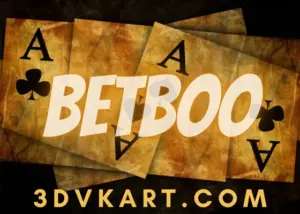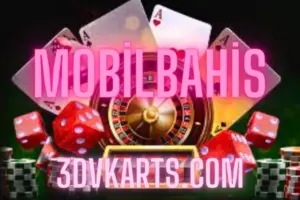Casino siteleri eğlenmenin asla bitmediği ve 24 saat kazançlarınızı katlama imkanı sunan bir aracıdır. Casino siteleri kullanıcılara farklı seçenekler sunarak harika işler çıkarır. Canlı casino için birçok site klasiklere ek özellikler sunarak üyelerin daha çok kazanma ihtimalini artırır. Bu seçeneklerin içerisinde casino slot oyunları her kuşaktan insanın son dönemlerde rağbet gösterdiği seçeneklerden biridir. Yılların klasiği olan casino oyunları şimdi siteleriyle hız kesmeyen zamansız bir eğlence sunmaktadır. Yazımızda sizler için bu sınırsız eğlencenin tüm ayrıntılarına yer verdik.
Casino siteleri modern çağın kolay para kazanma ve eğlenme yöntemlerinin başında gelir. Gelişen dünyada ceplere sığan kumarhaneler herkesin tutkusu olmaya devam etmektedir. Bu eğlencenin bir parçası olmak bir casino üyelik kadar kolaydır. Farklı casino siteleri çeşitli avantajlar sunmasıyla dikkat çeker. Önceliğinize bağlı olarak bonusları fazla olan, bahis oranları yüksek olan veya grafiklerine göre seçim yapabilirsiniz. Modern eğlencenin pratik hali casino siteleridir demek mümkündür. Bu çeşitli avantajlardan yararlanmak ve eğlenceyi her solukta yaşamak için casino siteleri arasından size en uygun olanı seçebilirsiniz.
Casino Siteleri Giriş
Casino siteleri giriş için hangi siteyi kullanacağınıza karar vermeniz gerekir. En güvenilir siteyi bulmak için makalemizin devamından faydalanabilirsiniz. Sitenizin güvenliğini veya bahis oranlarını direkt olarak gözlemlemek için deneme bonusu veren casino siteleri tercih edilebilir. Canlı casino oyunlarına erişim sağlayabilmek için üyelik oluşturmak istediğiniz siteye giriş yöntemleri arasından seçim yapmanız gerekir. Casino sitesinin sosyal medya hesapları ve paravan hesaplar bu aşamada kullanılabilecek seçeneklerdir.
Üyeler dilerse arama motoruna yazdıkları site adının ardından çıkan güvenilir paravan hesabına tıklayabilir. Ardından sitenin kendisine bahislerini oynamaları için yönlendirme gerçekleşir. Sitenin şahsi sosyal medya hesaplarının aktifliği güvenilirliği için bir ölçüt olmasının yanında giriş işlemleri için de kolaylık imkanı sunar. Her üye dilediği yöntemi seçebilmektedir. Günün her anında paranızı katlamak ve dostlarınızla eğlencenin en heyecanlı olanını deneyimlemek için casino sitelerine giriş yapabilirsiniz.
Casino Ne Demek ?
Casino kelime anlamı olarak kumarhane demektir ve içerisinde bahis severlerin makineler veya farklı oyunlar aracılığıyla bahislerini koyabildiği ortamı ifade eder. Eğlencenin ve kazanç katlamanın en kolay yolu olan casino siteleri her geçen gün üye sayısını artırmaktadır. Hızlanan ve genişleyen sektör içerisinde sağlayıcılar ve firmalarda kullanıcıları için yeni seçenekler sunmaktadır. Her gün daha çok gelişen ve bir kültür haline gelen casino oyunları içerisine klasikler hariç çeşitli yeni seçeneklerde eklenmiştir.
Bu seçenekler arasıdan kullanıcılar dilediklerini seçerek bahislerini ortaya koyabilir. Teknolojinin her gün daha çok geliştiği dünyada artık casinolar da elektronik sektörle birleşerek her kullanıcıya her an ulaşabilecekleri bir imkan tanınmıştır. Online casino seçenekleri arasından üyelerin en güvenilir siteyi bulması oldukça önemlidir. Güncel casino giriş işlemleri ve casino oyunlarıyla ilgili tüm ayrıntılara sahip olabilmek için makalemizin devamını okuyabilirsiniz.
Hangi Casino Oyunu Kazandırır ?
Hangi casino oyunu kazandırır, en çok kazandıran oyunlar gibi sorular herkesin merak ettiği sorulardır. Eğlenirken kazanmanın en nadir yollarından biri olan casino oyunları ilgisi son zamanlarda oldukça artmıştır. Casino oyunlar içerisinde gelişen sektörle beraber sayısız alternatif türemiştir. 2023 yılında en çok ilgi gören seçenek slot casino siteleri olarak tespit edilmiştir. Bu seçeneğin içerisinde temel prensip aynı desen veya renkleri beraber yakalayabilmektir. Son teknolojiyle birleştiğindeyse buna ekstra spin kazanma özellikleri ve daha üst kazanç elde edilebilecek özellikler eklenmiştir.
En çok kazandıran slot oyunları içerisinde en çokilgi gören ve kazandırdığı para hacmi en geniş olan oyun, 2023 yılında Sweet Bonanza olmuştur. Canlı casino oyun seçenekleri içerisinde klasikler liderliğini 2023 yılında da korumaktadır. En çok kazandıran canlı casino oyunu, Lightning rulet olarak tespit edilmiştir.
Casino Rulet Nasıl Oynanır ?
Casino rulet; yeşil, kırmızı ve siyah renklerden oluşan sayılardan oluşan bir oyundur. Kırmızı ve siyah renklerden 1’den 36’ya kadar sayılar dönen bir çarkın içerisine yerleştirilmektedir. Yalnızca ‘0’ yeşil renk olarak tasarlanmıştır. En zor gelme ihtimali olmasıyla oranı en yüksek bahistir.

Ayrıca düz bir zemin üzerinde tüm bu sayılar, tek-çift seçenekleri ve kırmızı-siyah renk seçenekleri bulunur. Bu alanlara bahis oynanır. Bahisler kapatıldıktan hemen sonra sayıların yazılı olduğu dönen çarkın içerisine; krupiyer bir top bırakır. Bu top hangi renk üzerinde durursa o sayıya bahis yapanlar kazanmış olur. Bu bahisin sahip olduğu renk veya tek-çift durumunda bahis oynayanlar doğru bildiğinde aynı şekilde bahislerini kazanmış olarak kapatabilirler. Her kullanıcının yıllardır zevkle oynadığı ve casino sitesi olmanın ilk şartını barındıran bu oyun daha çok kazanmanın en adrenalinli şeklidir.
Casino Oyunları Nasıl Oynanır ?
Casino oyunları nasıl oynanır, nasıl kazanılır ve çok daha fazlasını sizler için yanıtlıyoruz. En iyi casino siteleri listesi içerisinden bahis oranları ve bonusları en yüksek sitenin seçilmesi önemlidir. Güvenlik finansal işlemler ve kişisel bilgiler paylaşıldığı için en önemli etkenlerdendir. Canlı ve casino slot siteleri farklı alternatifler üretir. Dev klasikler serisine ulaşmak için canlı casino oyunları tercih edilebilir. Blackjack, rulet gibi oyunları bu kategoride bulmak mümkündür. Her oyun farklı prensiplere sahip olduğundan genel anlamıyla nasıl oynandığı tarif edilebilir.
Birçok sitede her oyuncunun bütçesine veya isteğine uygun yatırım oranı mevcuttur. Bu oranlara bağlı kalarak oyuncular dilediği bahis tutarını seçerek öngördükleri veya diledikleri şekilde ‘bahisler kapatıldı’ yazısını görene dek bahislerini oynayabilir. Yaygın olarak tercih edilen diğer slot casino oyunları ise, aynı veya benzer yapıların bir araya gelip patlaması veya eşleşmesi sonucu bahislerin kazanılmasıyla oynanır. Toto casino oyunları zamanının klasiklerinden olan ve sanal dünyaya taşınmasıyla birçok insanı mutlu eden bir oyundur. Çekiliş sonucu çıkacak olan sayıların tahmin edilmeye çalışılmasıyla bahisler oynanır. Her oyuncunun zevkine uygun bir seçenek casino sitelerinde mutlaka vardır.
Casino’da Nasıl Kazanılır ?
Casino’da nasıl kazanılır veya bir diğer şekilde casino oyunalarında kazanma ihtimali nasıl artırılır. Burada bahis severlerin kazançlarını artırma olasıklarından bahsetmek için bulunmaktayız. Casino oyun siteleri arasında sağlayıcı, bahis oranları veya bonuslar gibi değişkenler arasından seçim yapmak oldukça önemlidir. Bu değişkenler arasından önce, bahis oranlarına dikkat edilmesi gerekir. Bu sayede küçük bahislere karşı büyük oranlarda paralar kazanma ihtimali artar. Arından bonuslara dikkat edilmesi gerekir.
Discount casino giriş imkanı sağlayan sitelerin sunduğu kayıp bonuslar size ikinci bir şans tanır. Yatırımsız şartsız deneme bonusu veren siteler güvenlik açısından emniyetlidir. Hiç para harcayarak yatırım yapmadan kazanç elde edilmesine olanak tanır. Son olarak casino sitesinin çalıştığı sağlayıcılar oldukça önemlidir. Bu sağlayıcıların piyasa içerisinde isim yapmış ve yüksek oranlı güvenilir oyunlar sunan sağlayıcılar olması önemlidir. Bu özelliklere dikkat ederek kazanma ihtimalinizi artırabilirsiniz. Casino kumar tamamen şans oyunudur. Bir diğer kazanma taktiğiyse kesinlikle durulması gereken yerin bilinmesidir. Yukarıda bahsi geçen adımalara dikkat ederek kazançlarınızı artırabilirsiniz.
Casino Siteleri Bonusları Nelerdir ?
Casino siteleri bonusları farklılık gösterilebilmektedir. En yaygın olan bonusları sizler için özenle derledik. Bu bonular farklı koşullarda hizmet gösterir. Kayıp bonusu en sık talep edilen bonuslardandır. Kullanmak için yatırdığınız parayı kaybetmeniz gerekmekte.
Talep sonrası kaybedilen paranın sitenin yüzdesine göre bir kısmı geri alınır. Yatırımsız şartsız deneme bonusuysa hiçbir para harcamadan doğrudan kazanç elde etmek isteyen veya üyelik gerçekleştirdiği siteyi tanımaya yarar. Arkadaşını getir, doğum günü bonusu gibi promosyonlar da seçkin sitelerde yer almaktadır. Canlı casino veya slot için ayrı bonus seçenekleri olur. Sizler için derlediğimiz casino siteleri bonusları:
- İlk Yatırım Bonusu
- Yatırım Bonusu
- Casino Kayıp Bonusu
- Doğum Günü Bonusu
- Arkadaşını Getir Bonusu
- Discount Casino Güncel Giriş Bonusu
- Hoş Geldin Bonusu
- Yatırım Şartsız Deneme Bonusu
En Güvenilir Casino Siteleri
En güvenilir casino siteleri listesini sizler için verdiği bonuslar ve yan haklarla birlikte derledik. Ka
yıt aşamasında ve sonrasında üyelerin resmi bilgilerini paylaşması ve finansal işlemler gerçekleştirmesi sebebiyle bahislerin oynandığı sitelerin güvenliği oldukça önemlidir.
Oynanan ve kazanılan bahislerin sevincini yaşadıktan hemen sonra bu kazançların çekilememesi gibi durumlar birçok kullanıcı için fazlasıyla can sıkıcı durumlardır. Bu gibi durumların önüne geçmek için en güvenilir casino sitelerini sizler için derledik. Bahis severlerin muhafızları ve devler liginin en güvenilirleri işte şu şekilde:
- Casino metropol – En güvenilir casino sitesi sıralamasında liderdir ve kayıp bonus oranları yüksektir.
- Vdcasino – Yatırımsız şartsız deneme bonusu vermektedir.
- Casinomaxi – Bahis oranları en yüksek siteler arasında yer alır.
- Betovis – En iyi sağlayıcılarla çalışır ve bonus oranları çok yüksektir.
- Betpark – Köklü ve güvenilir sitelerin başında gelir promosyon seçenekleri fazladır.
- Aresbet – Deneme bonusu seçenekleri fazladır ve kaliteli içerikler sunar.
- Casino Levant – Gelişmiş oyun seçeneklerine ve yüksek bahis oranlarına sahiptir.
- Rexbet – Hızlı casino giriş imkanı sunar ve güvenliklidir.
Casino Metropol

Canlı casino sitesinin güvenliğinden nasıl emin olunur sorusunun yanıtı finansal işlemler ve şahsi bilgilerin üçüncü kişilerle paylaşılmaması konuları için oldukça önemlidir. Global olarak dolandırıcılık oranlarının artmasıyla insanlar güvenlik konusunda yeterli önlemleri almak için çeşitli alternatifleri öğrenmek ister. Öncelikle ülke içerisinde canlı bahis siteleri yasal mı? Gibi soruların sıklığı bu durumu kanıtlar. Canlı casino siteleri işlemleri için güvenlik önlemi olarak sanal kart veya BitCoin kullanılması son dönemlerde yaygın olarak tercih edilen güvenlik önlemlerinden biri olmuştur. Peki gelelim site güvenliğinden nasıl olabiliriz. Güvenliğinizle ilgili her adımı sizler için derledik:
- Canlı casino sitelerinin sosyal medya hesaplarını araştırabilirsiniz. Aktif olarak kullanılan canlı bahis sitesi Twitter, Telegram, Instagram, Whatsapp gibi iletişim ağları kullanıcılar için güven oluşturur.
- Casino sitesi sağlayıcıları güvenlik sürecinde oldukça önemlidir. Bu sayede bahis oranlarınız yüksek olurken aynı zamanda herhangi bir sorun olmaz.
- Casino sitelerinin sahip olduğu müşteri hizmetleri kesinlikle çok önemlidir. Kullanıcılar müşteri hizmetlerine dilediklerinde ulaşabilmelidir. 7/24 casino canlı destek hattı olması da belirleyici özelliklerden biridir. Anında üyelerinin sorunlarını gideren bir hizmet ağına sahip olması sitenin izlenimi için faydalıdır.
- Sitenin sahip olduğu URL’nin, sosyal medya hesaplarına belirtilen güncel linkle aynı olması da farklı bir çakma siteye giriş yapılmaması için önemlidir.
- Yatırım ve çekim işlemleri esnasında sitenin gereksiz bilgiler istememesine dikkat edebilirsiniz. Önemli olan IBAN ve tam isim bilgileridir.
- Yatırım işlemini gerçekleştirmeden önce alt yatırım limitlerini kontrol etmeniz gerekir. Alt yatırım limitine uygun olarak işlem gerçekleştirdiğiniz halde hala para isteniyorsa siteden çıkmanız en sağlıklısı olacaktır. Bu durumda muhtemelen yanlış sitede olduğunuz anlamını çıkarabilirsiniz.
- Sitelerin sahip olması gereken çeşitli sertifika ve lisanslar vardır. Üye olmadan önce tamamen güvenlik için bunlara sahiplik durumunu kontrol edebilirsiniz.
- Casino sitelerine üyelik işlemlerinden önce sayfamızda yer verdiğimiz bahsi geçen güvenli casino siteleri başlıklarını okuyabilirsiniz.
- Sektörde güvenilir siteler oldukça fazladır. Bu siteler içerisinden seçim yaparak daha güvenilir bir sonuca ulaşabilirsiniz.
Casino Para Yatırma ve Çekme İşlemleri Nasıl Yapılır ?
Casino para yatırma ve çekme işlemleri için gerekli adımların bilinmesi herhangi bir finansal problem yaşamamak için çok önemlidir. Öncelikle her casino sitesinin prosedürleri gereği belli bir yatırım alt limiti ve çekim üst limiti bulunmaktadır. Yatırımınızı gerçekleştirmeden önce hangi işlem yöntemini kullanacağınıza karar vermeniz gerekir. Sitenin sahip olduğu ‘para yatırma’ veya benzeri bir kısıma giriş yapmanız gerekmektedir. Devamında kullanmak istediğiniz yatırım şeklini seçmeniz gerekir.

Seçtiğiniz yöntemin alt limitini göz önünde bulundurarak yatırım işleminizi gerçekleştirebilirsiniz. Bu aşamada telefona gelen bildirimler veya istenen şifreler gayet doğaldır. Her yatırım işlemi siteler içerisinde 5dk-30dk arasında gerçekleşir. Bu durum tamamen günün saatine ve banka yoğunluğuna bağlıdır. Siteler doğrudan banka ile bağlantı kurar. Para çekme işlemleri kesinlikle seçilen çekim işlemi için üst limite uyulması gerekir. Bu üst limitler genellikle oldukça geniş bir hacme sahip olur. Tek seferde çekilemeyen paralar için kendi isteğinizle iki taksit şeklinde çekim yapabilirsiniz. Anormal gecikme durumunda canlı destek hattına bağlanarak finansal işlemleriniz için hızlandırma talebinde bulunabilirsiniz.
VDCasino
Vdcasino b onus oranları ve promosyon çeşitliliğiyle üyelerinin dikkatini çekmeyi başarır. Kolay yatırım ve işlemleri sayesinde Vdcasino’da her işlem oldukça hızlı ilerlemektedir. Dilenen her an ve her yerde izleme imkanı sunan canlı tv seçenekleri mevcuttur. Canlı destek hattından sağlayıcılara kadar piyasada aranan tüm özellikleri bünyesinde bulundurur. İlk etapta yeni üyeleri için yatırımsız şartsız deneme bonusu vermesi de büyük bir artı kazandırır. Son trendleri yakalamak ve en iyi oranlarla bahislerinizi oynamak için Vdcasino tercih edilmesi uygundur. Site içerisinde demo seçeneği olması sayesinde kullanıcıların sıklıkla ziyaret ettiği bir sitedir.
onus oranları ve promosyon çeşitliliğiyle üyelerinin dikkatini çekmeyi başarır. Kolay yatırım ve işlemleri sayesinde Vdcasino’da her işlem oldukça hızlı ilerlemektedir. Dilenen her an ve her yerde izleme imkanı sunan canlı tv seçenekleri mevcuttur. Canlı destek hattından sağlayıcılara kadar piyasada aranan tüm özellikleri bünyesinde bulundurur. İlk etapta yeni üyeleri için yatırımsız şartsız deneme bonusu vermesi de büyük bir artı kazandırır. Son trendleri yakalamak ve en iyi oranlarla bahislerinizi oynamak için Vdcasino tercih edilmesi uygundur. Site içerisinde demo seçeneği olması sayesinde kullanıcıların sıklıkla ziyaret ettiği bir sitedir.
CasinoMaxi
Casi noMaxi en yüksek bahis oranlarına sahip olmasıyla sıklıkla tercih edilmektedir. Sitenin sahip olduğu bahis oranları piyasa içerisinde rakiplerine oranla dikkat çekici bir farka sahiptir. Discount casino bonusları her türlü casino oyunu seçeneği için kullanıcılara ayrı ayrı sunulmaktadır.
noMaxi en yüksek bahis oranlarına sahip olmasıyla sıklıkla tercih edilmektedir. Sitenin sahip olduğu bahis oranları piyasa içerisinde rakiplerine oranla dikkat çekici bir farka sahiptir. Discount casino bonusları her türlü casino oyunu seçeneği için kullanıcılara ayrı ayrı sunulmaktadır.
Kayıp bonus avantajlarından yararlanarak ikinci bir şans elde etmek isteyen kullanıcıların vazgeçilmezi Casinomaxi’dir. Site içerisinde bulunan tüm oyunları son teknolojinin gelişmiş grafiklerin yansımasıdır. Aviator ve çok daha fazla seçeneği yatırımsız şartısız deneme bonusuyla başlayarak oynayabilirsiniz. Sayısız avantajı bahis severlerle buluşturan Casinomaxi yüksek kazanç ve sonsuz eğlencenin mekanıdır.
Betboo
Betboo canlı bahis sitesi içerisinde ilkleri yaşamaya kendinizi hazırlayabilirsiniz. He
r gün sınırsız eğlence veya düşük alt limitler sayesinde kıyasıya rekabetli turnuvalara katılarak rakipleriniz arasından sıyrılabilirsiniz. Turnuvalar sayesinde hayatlarınızı değiştirecek mevlalar kazanabilir be kazanırken size sunulan eğlence hizmetlerinden yararlanabilirsiniz. Site içerisinde yer alan ‘oyun meydanı’ kategorisi içerisinde Türkiye’nin en sevilen geleneksel masa oyunları yer alır.
Okey, tavla, türk pokeri gibi oyunları kahvehaneye gitmeden evinizden oynama imkanı verir. Site içerisindeki görseller ve oyun çeşitliliği tüm bahis severleri doyurur niteliktedir. Sahip olduğu tüm sağlayıcılar sektör içerisinde oldukça rağbet görür. Site tüm bonuslarını kullanıcıların en çok talep oluşturduğu oyun ve kategorilere odaklayarak hazırlar böylece tam memnuniyet temenni eder. Yatırım konusunda tamamen güvenlidir ve paranızın kalmayacağını garanti eder.
1xbet
1xbet canlı bahis sitesinin ilk ilkesi kesinlikle güvenlik ve çeşitliliktir. Çeşitlilik ilkesini oldukça iyi bir denge üzerinde tutar. Gereksiz ve güvenilir olmayan envanterleri atar ve yalnızca en seçkin olanlarla kullanıcılarına harika bir yelpaze sunar. Türkiye’nin en sevilen casino sitesi olmasının başlıca sebebi, finansal işlemleri oldukça hızlı bir şekilde halletmesidir. Hızlı bir şekilde üye olarak 1.200TL nakit bonus avantajından yararlanabilirsiniz.
1xbet, her kullanıcının önceliği olan güvenlik konusunda akıllarda bir soru işareti bırakmayarak üyelerini etkiler. Yatırım şartsız deneme bonusu veren nadir casino sitelerden olması da daha hızlı bir şekilde Betboo ailesinin genişlemesine yardımcı olur. 1xbet kullanıcılarının her an faydalanabileceği bonus ve promosyonlarının yanında sorunları için beklemelerine gerek kalmadan faydalanabilecekleri canlı destek hattı da mevcuttur.
Bets10
Bets10 casino sitesi içerisinde büyük bir çeşitlilik mevcut olduğu gibi aynı zamanda SSL ile üyelerin bilgileri üçüncü kişilere karşı korunur ve hakları saklıdır. Firma oldukça köklü bir sitedir. Tüm yeni üyelere sunulan 1.000 TL hoş geldin bonusundan faydalanılabilir böylece taze üyeler kendini şımartabilir. Farklı oyun seçenekleri ve kaliteli görseller sayesinde vakit hızlıca akar ve kullanıcılar kendini eğlencenin akışına bırakır. Türkiye içerisinde kullanılan siteler arasında en eskilerden biridir. Yıllardan bu yana günümüze kadar gelen firma herhangi bir güven sarsıntısı yaşatmamıştır. Uygun yatırım limitleri sayesinde her kullanıcı kolayca bahislerini oynayabilmektedir.
Discount Casino
Discount Casino özellikle Drops&Wins oyunlarında en yüksek limitleri ve kazançları vadeden siteler arasındadır. Güvenilir bahis siteleri arasında liderliğe oynadığını zaten yazımızın başında belirtmiştir. Kullanıcıların değer ve önem verdiği her konuda üstün başarı sağlayan Discount Casino kurulduğu andan itibaren kendinizi kanıtlamaya ve ailesini genişletmeye devam eder. Discount Casino üst çekim limitleriyle dikkat çekmektedir. Sektör içerisindeki tek seferde en çok para çekme oranına sahip site olması büyüklüğü konusunda akıllardaki tüm soru işaretlerinin giderilmesini sağlar.
Restbet
Restbet casino sitesi 1200 TL spor ve casino için geçerli hoş geldin bonusuyla tüm üyelerini kucaklar. Sitenin bu denli sevilmesinin sebebi birçok bonus seçeneğinin tek seferlik olmamasıdır. Restbet bonus seçenekleri içerisinden en temel olan: yatırım ve kayıp bonuslarıdır. Bu bonuslar her yatırım sonrasında tercih sebebidir. Üyelerine sunduğu diğer en büyük avantaj hızlı giriş seçeneğinin olmasıdır. Her kullanıcı oldukça hızlı bir şekilde bahislerini girer. Güvenilir ve adil bir şekilde bahislerinizi oynamanızı sağlayan ve haklarınızı saklı tutan evrensel lisanslara sahiptir. En büyük çeşitliliği casino ve spor bahislerinde sunan siteyi mutlaka denemelisiniz.
Jetbahis
Jetbahis casino sitesi içerisinde diğer tüm sitelerden farklı olarak casino paranızı spor için ve tam tersi kombinasyonda kullanabilirsiniz. Her kullanıcının güvenle bahislerini oynadığı site içerisinde ilk dikkat çeken özellik günlük bonus avantajıdır.
Dilediğiniz tüm spor branşlarında bahis oynayabileceğiniz sitenin aynı zamanda bahis bozdurma seçeneği vardır. Slot ve Avitor oyunları için ücretsiz deneme için demo vardır. İstediğiniz oyunun üstüne gelerek ‘sanal parayla oyna’ yazısına tıkladığınızda böylece demo seçeneğe giriş yapmış olursunuz. Jetbahis giriş ve güncel domain bilgisi için her an aktif olan sosyal medya hesapları, paravanları ve mobil giriş seçeneği mevcuttur. Bahislerinizi nefes kesici oranlarla oynamak için gayet uygun bir seçenektir.
Mobilbahis
Mobilbahis casino Türkiye’nin en bilinen ve sevilen sitelerinin başında gelir. Totemleriniz varsa ve özel günleriniz olduğuna inanıyorsanız gerçekten şanslı gününüzdesiniz!
Ayın 14’ünde yararlanabileceğiniz harika fırsatlar sayesinde gün içerisinde kendinizi şanslı hissetmek için bir sebep daha buldunuz. Ben arkadaşım olmadan para kazanamam diyorsanız işte harika bir fırsatı daha Mobilbahis sizler için sunar. Arkadaşını getir bonusu sayesinde paranızı kardeş payı yapacak şekilde her ikinize hem nakit hem de freespinleri toplama imkanı verir.
Mobilbahis bonus ve promosyonları hiçbir yerde bulunamayacak türden özelliklere sahiptir. Daha açıklayıcı olmak adına hafta sonuna özel seçili oyunlarda sunulan freespinler sahiplerini bekler. Teknik bilgilerle ilgili, site tam donanımlı bir ara yüze sahiptir. Dünya çapında geçerli sertifikalarıyla her bir üyesine tam güvence sağlar.






